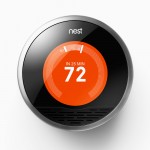March 2, 2016
Programmable Thermostats… dialing in comfort, convenience and energy savings!
 There are two fundamental ways to maximize your heating and cooling energy efficiency. Either, 1) Stand by your old thermostat and constantly adjust it throughout the day and the seasons, or 2) Invest in a programmable thermostat.
There are two fundamental ways to maximize your heating and cooling energy efficiency. Either, 1) Stand by your old thermostat and constantly adjust it throughout the day and the seasons, or 2) Invest in a programmable thermostat.
According to Energy Star, the average household spends more than $2000 a year on energy costs, up to half of which is for heating and cooling. With a programmable thermostat, you can save around $180 each year, maybe more in as energy costs go up!
Programmable thermostats automatically do all the temperature monitoring and adjusting for you by following the instructions you program into them. In the process, they save energy and money. If you program your thermostat back 10º to 15º for eight hours while you’re away, you’ll save about 5% to 15% a year on your heating bill. That translates to 1% savings for each degree that you lower the setting over an eight hour period. During winter months, it’s recommended you set your thermostat to 68ºF while you’re at home and awake, and lowering it when you’re asleep or away.
There are five types of thermostats:
- Electromechanical (EM) thermostats have manual controls for day and night settings.
- Digital models are precise and feature the greatest flexibility for custom scheduling.
- Hybrids combine digital and manual controls, so they offer flexibility in a simpler format than digital models.
- Occupancy thermostats maintain the same setback temperature until you press a button to return to the desired temperature for occupying the room. These units are for buildings that are not occupied for extended periods.
- Light sensing heat thermostats adjust the temperature according to the light levels in the building. These are primarily for stores and offices.
 A few misconceptions…
A few misconceptions…
-First, it’s not true that by setting the temperature back, and later setting it forward to the original temperature, you’re making your furnace work harder and actually consuming more energy. At worst, you’ll most likely break-even – it uses just as much extra energy to reheat a room to its original temperature as the energy saved by reducing the heat. What’s more, the longer you keep the temperature lowered, the more energy and cost savings.
-The second misconception is that you can reheat a room faster and more efficiently if you turn the thermostat to a higher than desired setting. No matter how high you turn up the thermostat’s temperature, the room will warm up at the same rate of speed. So, when you program your thermostat to reheat (or re-cool) your home, set it to the desired end temperature and no more or less. We recommend that you chart your weekly routine, weekdays and weekends, so you can choose a thermostat that’s programmable to your schedule. Ask our professionals if the new unit is compatible with your current unit’s wiring. If the unit’s clock draws power from the heating system, is the clock disrupted when the furnace cycles off? Is the thermostat precise enough for your needs? Is it too complicated (particularly digital models)?
Need more helpful advice? Just call us. We’ve got the answers about programmable thermostats. We even have TALKING THERMOSTATS that walk you through the programming every step of the way. Call today to schedule an appointment with one of our professional, licensed technicians, 303-232-6611.


